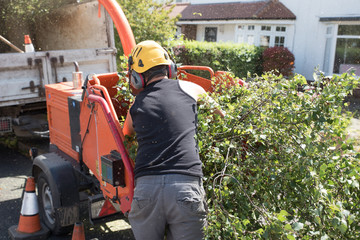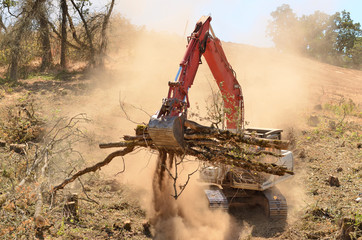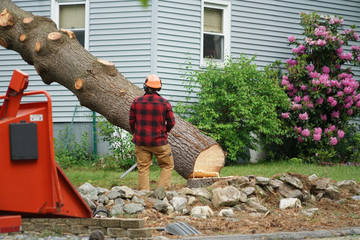Pruning a tree is an art form that requires skill and knowledge. There are several cuts, but all are necessary to maintain long-term health and structure. These include a Structural (subordination) cut and branch removal. In addition to removing a branch, experts suggest cutting a stub to prevent the bark from being torn.

Tree Service Cumming GA is essential for the health of trees and reduces crown foliage density. It promotes strong structure and reduces damage from severe weather. It also helps to develop a pleasing form. Properly pruned trees will require less corrective pruning as they mature. Every cut will alter a tree’s growth pattern and shape, so the process must be done carefully and precisely.
The goal of structural pruning is to create a strong, uniform structure. To achieve this, pruning should favor a single dominant leader and suppress competing leaders by making reduction cuts. These cut stems to one-third of their diameter, forcing future growth into the unpruned leader. This small aspect ratio also promotes a strong union.
Branch removal during tree pruning consists of removing lower branches from a tree, usually at a level that is flush with the trunk. This helps to maintain safe clearance and will also reduce the risk of rot. In addition, removing temporary branches will leave more space for vehicles, pedestrians, and signage.
The first step in tree pruning is to become familiar with the shape of your tree. Avoid making sudden, large cuts that change the shape of your tree. Rather, make gradual changes that will enhance the tree’s natural shape. When pruning a tree, remember to remove any branches that are dead, diseased, or broken. Once done with these, you can select which branches will stay. The remaining branches should be placed about six to 24 inches apart.
When pruning, you should never remove more than a quarter of the living tree’s branches at a time. This way, you can gradually remove more branches over time. And remember: always make sure you are safe and careful when pruning a tree. If you are unsure about what you are doing, you can ask questions or get some advice in the comments section.
The reduction cut is the preferred method for pruning landscape trees. It thins out the outer edges of the canopy, providing better structure and reducing risk. Researchers are interested in finding more ways to use reduction cuts to thin out large branches. However, these studies are still in their early stages. Gilman’s study, which the fund will fund, is one of the first of its kind.
The reduction cut is often used to restore a tree after a storm. It takes out a branch’s terminal portion, resulting in a shorter branch. It’s important to make this cut just beyond the lateral branch, as the remaining branch will continue to act as the terminal branch for the plant. Another way to reduce the size of a tree is by pruning the crown. Reduction cuts should be made from the outermost edge of the canopy and should not exceed 20%. Dead branches and smaller live branches should be removed from the crown. However, don’t cut branches less than 1.5 inches in diameter.
Branches should be pruned at an angle of 45 degrees to the trunk. This angle encourages callus formation and prevents water damage. It also ensures that the resulting growth will distribute evenly throughout the tree. After pruning, apply mulch at the base of the tree and leave it at a distance of 2 inches from the trunk.
A reduction cut, on the other hand, involves removing a branch to a lateral branch. The lateral branch should have a diameter of at least one-third of the cut branch. This cut is also called a heading cut and does not stimulate unwanted water sprouts or suckers. While heading cuts are effective for reducing the size of a tree, they are often inappropriate for many trees, as they can disfigure older trees. Furthermore, they can weaken the structural integrity and leave large bare wood areas vulnerable to disease.
Trees protect themselves by compartmentalizing the injured tissue and closing the wound. In addition to protecting the wound, callus tissue forms around the injury. This prevents infections, and the wood surrounding the injury changes color. This color change depends on the type of wood and wound. New growth rings will form the following spring and cover the injured tissue. Over time, the wound will close, and the tree will grow over the new tissue.



